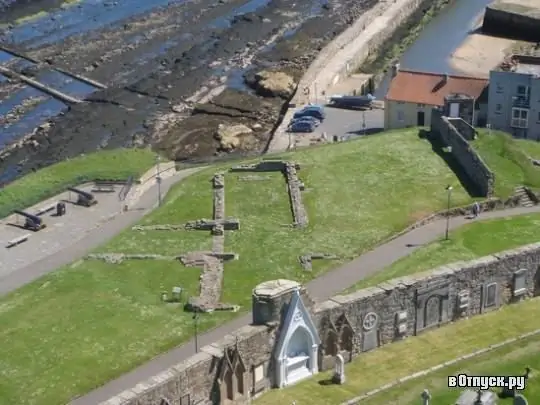
Description of the attraction
The Church of the Virgin Mary on the Rock, the Collegiate Church of the Virgin Mary or Virgin Mary of the Caldes, is the oldest Christian place of worship in the city of St Andrews (St Andrews) in Scotland. The appearance of a temple on this site dates back to the latest in the 8th century, when, it is believed, there was a church that belonged to the monastic order of the Kaldians. Calde communities were widespread at the beginning of the Middle Ages in Ireland and Scotland and existed until the 11th-12th centuries, when in Scotland the pious Queen Margaret (future St.). Often kalda monks settled in communities of 13 people, which symbolized Jesus Christ and his 12 apostles.
In 1140 a community of Augustinian monks was founded here. They are trying to subjugate the Kalds or integrate them into their community, but documents indicate that in 1199 the Kaldy community still existed independently.
By 1250, caldes settled in the Church of the Virgin Mary, which receives the status of a collegiate church, which means that the church was headed by a chapter, that is, a council of canons, but not a cathedral (as under the bishop and cathedral), but collegial or (that is, just at the church). It is the first collegiate church in Scotland and the only one to have emerged before the 14th century.
The church was destroyed in 1559. Now only ruins remain of it, which for the most part date back to the XII century. They are in close proximity to the ruins of St. Andrew's Cathedral. Although little has survived from the church, it can be said from the remains that the building was cruciform, without side chapels, and the hoy were longer than the nave. The altar was in the eastern part.






